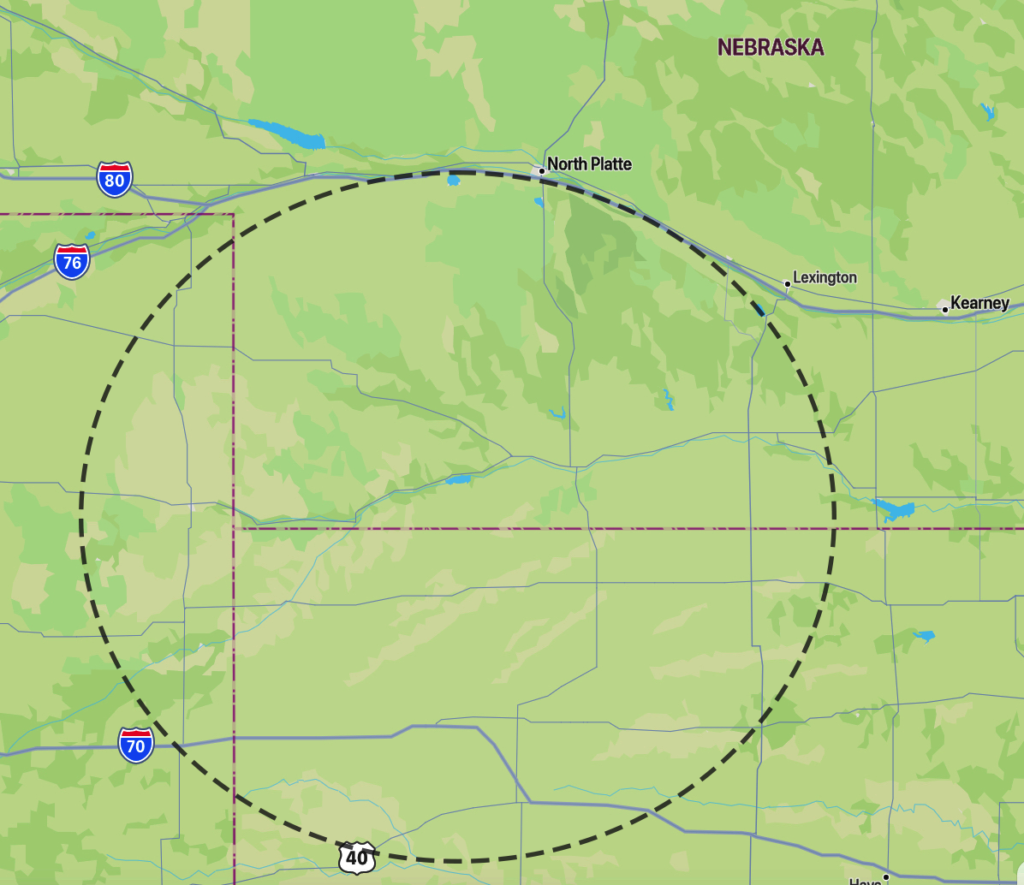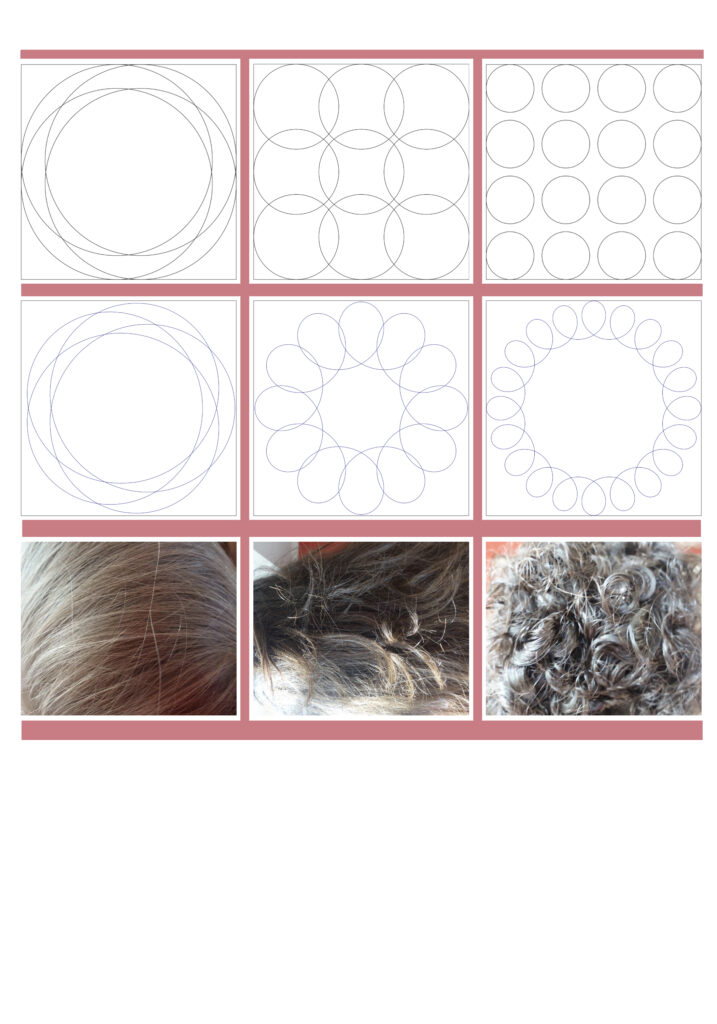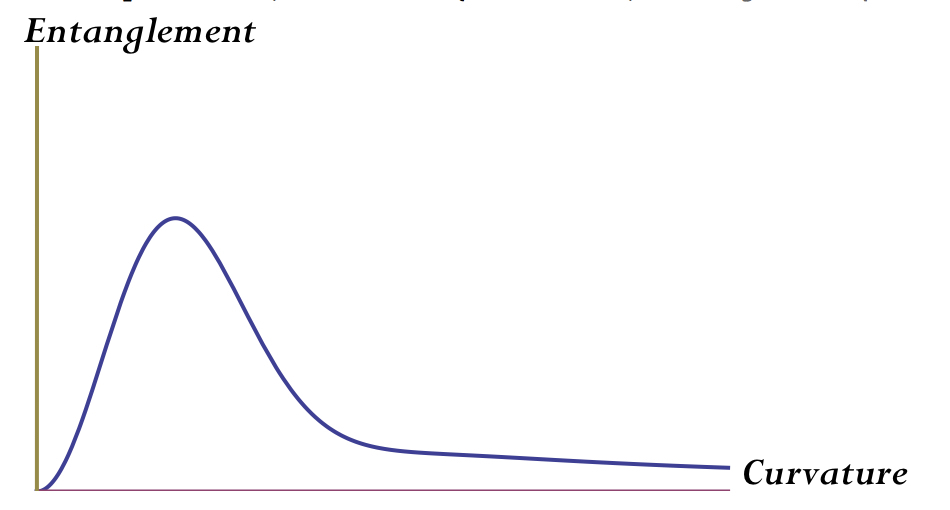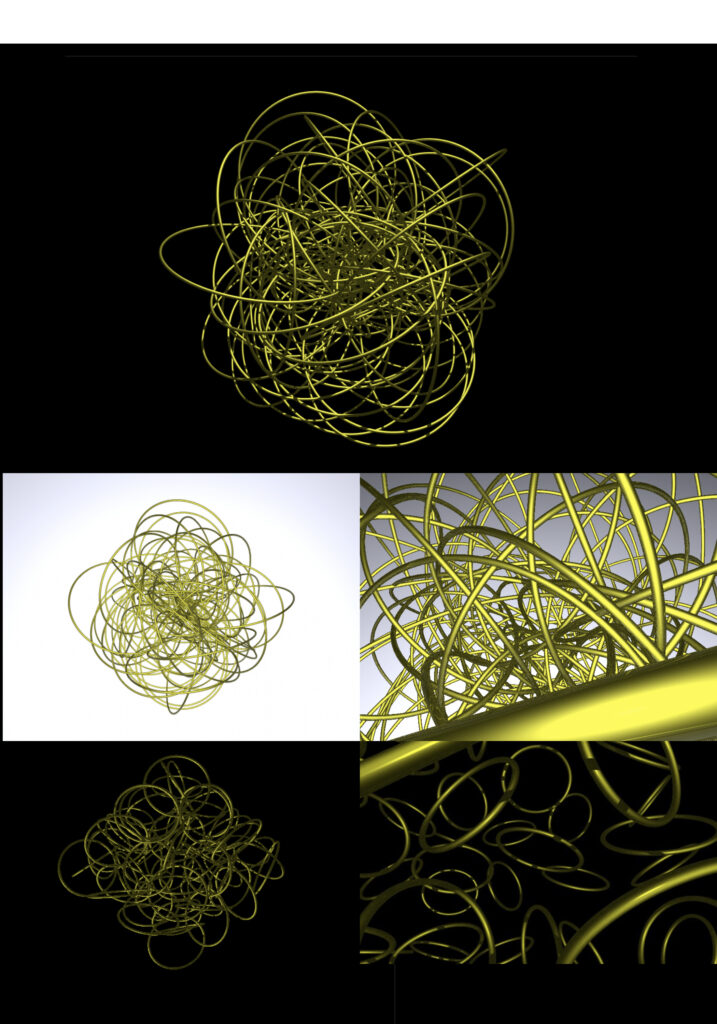Chapter 14: Curvature and Tangling
Curvature is, of course, the measure of how much or how little an arc curves or bends. In a circle the curvature is constant, there is the same amount of bending at every spot. The total curvature in a circle is 2 Pi, the idea is that if you travel in a complete circle you have turned once around. How fast you turn depends on the size of the circle. A small circle bends a lot with little length, so we call this high curvature. A large circle bends very little over unit length, so we say that each spot on the large circle has low curvature. In fact, we say that a circle of radius R has curvature 1/R at each point. A circle of radius R has length 2πR, so summing up the curvature over the whole circle we get 2πR X 1/R = 2π for the total curvature, just as we said.
Of course a string in a particular position might have variable curvature — bend a lot in some places and be relatively straight in others. We can measure the curvature at different places with the osculating circle. The osculating circle at a point on a curve is the circle that approximates the curve near that point — it bends as the curve does at that point. So at a tight corner the osculating circle has a small radius, at a point in a gentle bend the osculating circle has a large radius. In both cases the curvature is given by 1/R, where R is the radius of the osculating circle.

The osculating circle for Highway I-80 near North Platte, Nebraska has a radius of about 60 miles.
We can also measure the curvature on discrete, stick constructions. Consider a flight on the cubic lattice. At each vertex there are two possibilities for angles: 180 if the flight continues in the same direction and 90 if it turns. Clearly if it is 180 there is no curvature, but what about the 90 case? The string turns through 90 degrees, so it makes sense to say this adds 90 degrees or π/2 to the total curvature. However we can’t use an osculating circle approximation, because all the turning is concentrated at a single point, so the radius would be infinitely small. So we simply focus on the total curvature as the sum of the these turns along the string (the 180 is no turning). We deal with the gaussian flights similarly — the total curvature is the sum of the turning angles along the flight. For example, the initial position for the crankshaft construction was the regular polygon with N sides, which has total curvature 2π. As the crankshaft rotations are applied, and the polygon is crumpled, the total curvature increases.
What is the relationship between curvature and entanglement? Clearly some curvature is required for entanglement, since a straight line has no entanglement. One might think that more entanglement requires more curvature, but this is not true for the most general mathematical case. For example, if the string is very thin, one can make a long thin braid with lots of crossings but without much curvature.

Which tangles more readily: curly hair or straight hair? A perhaps natural thought, supported by some theoretical evidence, is to associate curvature and entanglement, and assume that they would grow together – that an increase in one fosters an increase in the other. However we have biological examples such as DNA in the chromosome, and mechanical examples such as coiled telephone cords, in which much more curvature is employed than is required for the packing, and in which tangling is presumably detrimental.
In most circumstances DNA is coiled somehow, sometimes having several scales of compaction. In particular there is supercoiling, where the double helix is twisted back again on itself. Hold a string between your two hands and twist one end, holding the other fixed. At some point as you keep twisting, the string will suddenly form a loop that begins to wrap around itself — this is sometimes called the twist instability and is the beginning of what is called supercoiling in DNA. In general, we could describe coiling as adding curvature to a string. Given that in many situations tangling presents some sort of problem, one might fairly ask: why is some sort of coiling employed? Because it may seem that increasing curvature would tend to increase entanglement.
How would one best pack a long string into a small volume so as to minimize tangling? A little thought tells us that we could accomplish this by inhibiting the motion of the string entirely. This is why we often wrap or coil extension cords or power cords and the like into tight coils that are completed in some way intended to keep them tight.
However this is not always possible (and even if it is the coils have a way of coming loose, and tangling happens in both the coiling and uncoiling process — cords put away neatly in the drawer often seem to come out tangled). For example, in the cases of DNA and the suddenly obsolete telephone cords mentioned above, motion is required for the purpose or function of the string. And as we will see in the next chapter, DNA is often cut and rejoined and this can lead to tangling (this is not usually a problem with extension cords).
So perhaps a more complete practical question is how best to pack the string to avoid tangling given that there will be some jostling or noise?
Of course, if we are packing a long string into a small volume, we have to bend the string. In fact we can be a little more precise about this. If we pack a string of length L into a sphere of radius R, then the total curvature is at least L/R – 2. So this is the amount of curvature required for the packing. Is there any benefit in bending more than is required?
Below we have a couple of 2D constructions that might help us think about this problem.

Here in the top row we have circles arranged in a plane in a two dimensional grid inside a box. Each box is the same size (9 by 9), and the total arc-length is the same in each box(36π). We simply use the number of crossings as a proxy for entanglement, and the total curvature is 2πN, where N is the number of circles. In the left frame there are 4 circles and 12 crossings. In the middle frame there are 9 circles and 24 crossings. In the right frame there are 16 circles and 0 crossings. In the second row we have a similar schematic with a single continuous curve in each frame. We have numerical estimates of the arclength and the curvature in each frame, note that the arclength is nearly constant across the three frames. The box size is 2 by 2 in each frame. In the left frame the arclength is approximately 21.0468, the curvature is approximately 25.1327, and there are 15 crossings. In the middle frame the arclength is approximately 21.0456, the curvature is approximately 69.115, and there are 36 crossings. In the right frame the arclength is approximately 21.0418, the curvature is approximately 119.381, and there are 20 crossings. In the third row we see examples of straight, wavy, and curly hair, at approximately the same scale.
These models lead us to this relationship between curvature and entanglement in these sorts of situations.

We can move into 3D with an analogous construction. We take a fixed volume, but say a cube or a sphere, and we evenly distribute circles in it. The circles are all the same size, and are randomly oriented, so they might link with each other. We would like to keep the density of the string, so the total length in the volume, constant. So if the radii are large, we have fewer circles, if the circles are small we distribute many of them.
If there are N circles in the box, and they each have radius R, then the total length in the box is L = N X 2πR. The total curvature in a circle is 2π, so the total curvature of the circles in the box is 2πN. And N = L /2πR, R = L / 2πN.
Now we make this observation. If we make N very large, so the circles are very small, then the circles cannot be linked, because they are spread out evenly, and they will be too far apart from their neighbors to link.
Let’s be a little more precise. Let’s assume the box is a 1X1X1 cube. We distribute the circles with their centers at equally spaced points in the box. To find out how likely circles are to be linked, we need to know how far apart the circles are. If there are N points, then if they are distributed equally there must be the cube root of N points along each side. So the spacing between points must be D = 1/(cube root of N). Now two circles can be linked if the distance between their centers is less than two radii. But R = L / 2πN. So if D > L / πN, there can be no linking. But that is L / (N to the 2/3) < 1. So whatever length L we want in the box, there is some N beyond which there can be no linking.
That is the limit of many small circles, what about in the other direction — fewer larger circles? Larger circles are more likely to link, but there are fewer of them because the total length L is kept constant. In the extreme limit, one circle, there is no linking. (This case may not be possible, because depending on L a single large circle may not fit in the box). The idea we hope is clear, that in this system the graph of entanglement as a function of curvature is as we’ve pictured above. It starts low or at zero, rises to a maximum, then declines toward zero again. The system with various numbers of circles is depicted below.

One can think of tight local coiling, such as a telephone cord or DNA supercoiling, as a tradeoff, the induced local entanglement diminishes the chances of more problematic global entanglement. Moreover, the stiffness of the string may mean that the tight coils do not tangle much with their neighbors, but do reduce the available length for global entanglement. For example consider the phone cord depicted here. This cord stretches to about three times the functional length of its coiled position. So the situation is akin to the middle row in the table above, in that we might be tempted to observe that the first image has fewer crossings than the third. But if the local coiling does not induce tangling, there is much less free length for tangling. Also, if we are in a situation like that of the middle frame, clearly adding curvature — the local coiling reduces tangling.
